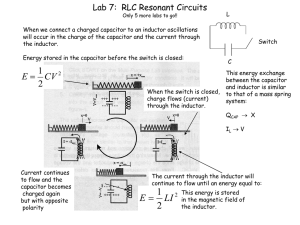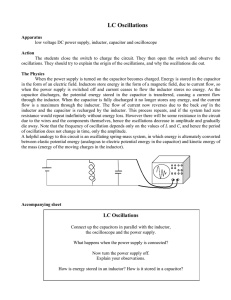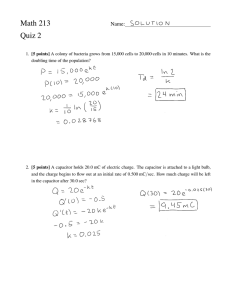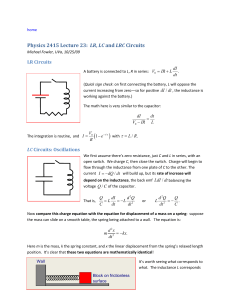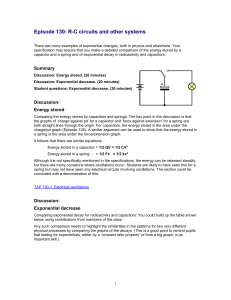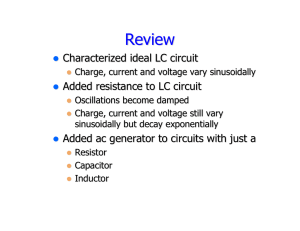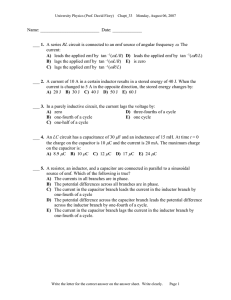Episode 130-1: Electrical oscillations (Word, 108 KB)
advertisement
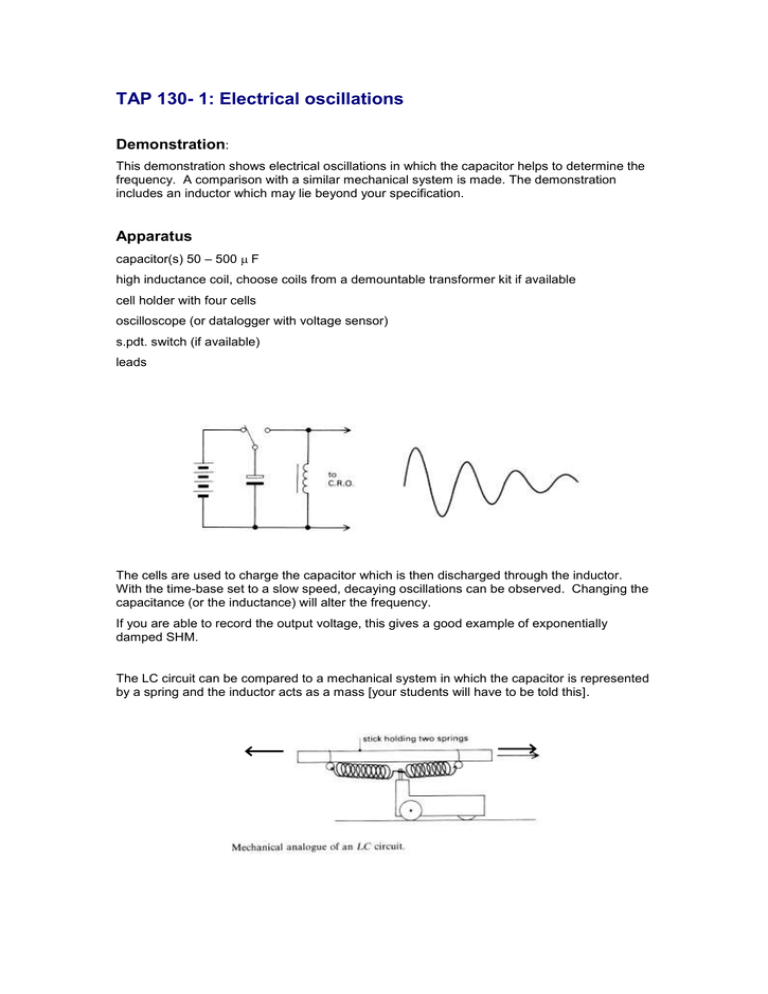
TAP 130- 1: Electrical oscillations Demonstration: This demonstration shows electrical oscillations in which the capacitor helps to determine the frequency. A comparison with a similar mechanical system is made. The demonstration includes an inductor which may lie beyond your specification. Apparatus capacitor(s) 50 – 500 F high inductance coil, choose coils from a demountable transformer kit if available cell holder with four cells oscilloscope (or datalogger with voltage sensor) s.pdt. switch (if available) leads The cells are used to charge the capacitor which is then discharged through the inductor. With the time-base set to a slow speed, decaying oscillations can be observed. Changing the capacitance (or the inductance) will alter the frequency. If you are able to record the output voltage, this gives a good example of exponentially damped SHM. The LC circuit can be compared to a mechanical system in which the capacitor is represented by a spring and the inductor acts as a mass [your students will have to be told this]. A dynamics trolley is attached to a metre rule by two springs. A gentle motion of the stick can maintain oscillations and at the resonant frequency the amplitude will be quite large. On removing the driving force, the oscillations will die down as in the LC circuit. External references This activity is taken from Revised Nuffield Advanced Physics and is an adaptation of experiment H26.

